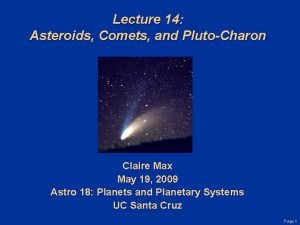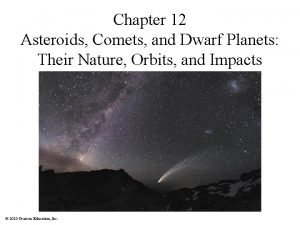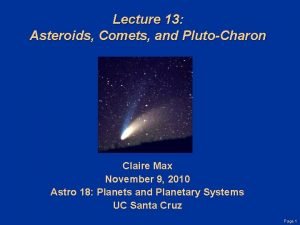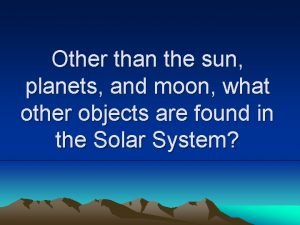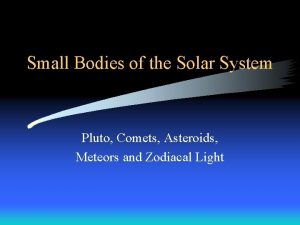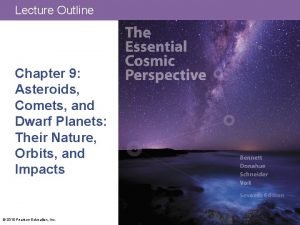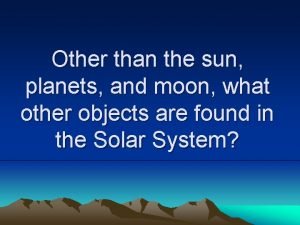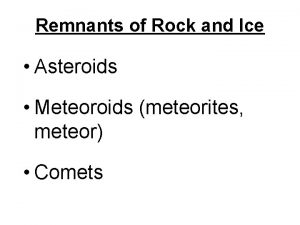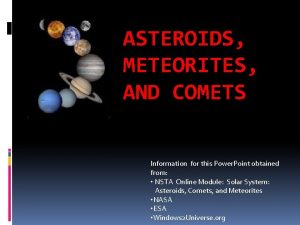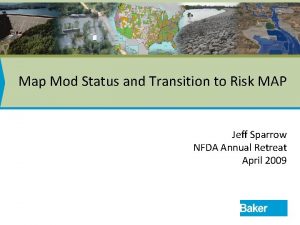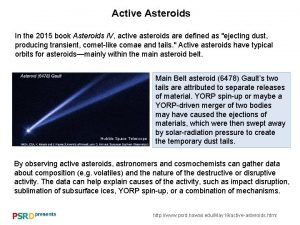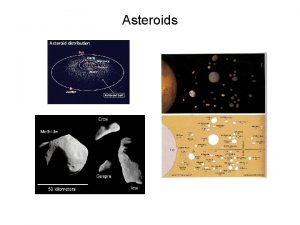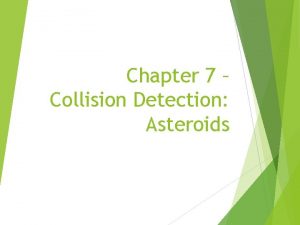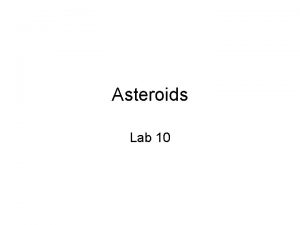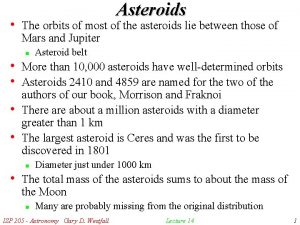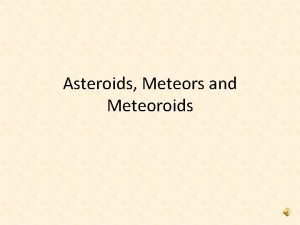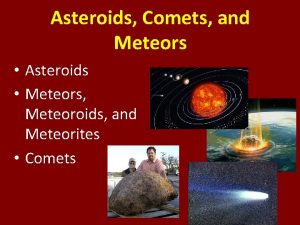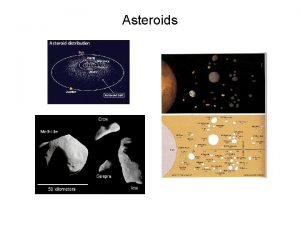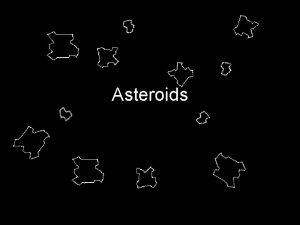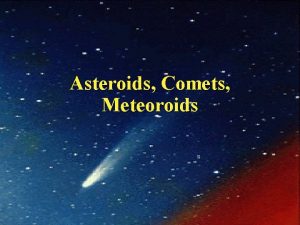Voyager 2 Asteroids Voyager 2 journeys to the














- Slides: 14

Voyager 2

Asteroids • Voyager 2 journeys to the outer planets making tremendous observations and measurements that have changed our view of the solar system. • The trip was not without risk though. The craft had to pass through a region of millions of asteroids located between Mars and Jupiter. • These objects are also known as minor planets. These irregularly shaped bodies are made of carbonaceous rock or silicate rock. • Ceres are the largest asteroid, with a diameter of 1000 km.

Asteroid Belt

Comets • Periodically, comets are visible to the unaided eye, but are normally detected by telescopes. • These objects are made up of mainly dust and ice. Scientists have labeled them “dirty snowballs”. • Occasionally a comet gets bumped from its orbit by the gravitational pull of several objects. This causes the comet to fall toward the sun.

• Material begins to evaporate from its surface, forming a tails that can be thousands of kilometers longs. The tail always points away from the sun because it is pushed by the solar wind.

Halley’s Comet When it passed through the inner solar system in 1986, Comet Halley was observed by five space probes. The European Giotto Spacecraft showed the first ever close-up pictures of a comet. This one had a nucleus that measured 16 km by 8 km.

Meteors • Everyday, earth is bombarded by thousands of dust and rock fragments from space. • When they enter the atmosphere, friction causes these particles to heat up and vaporize. • If the fragments are large enough, however, it sometimes burns up, generating enough light to make it visible. These are called meteors (shooting stars).

Meteor over Northwest De Moines

Meteorites • Some fragments are either large enough or tough enough that remnants survive and hit the earth’s surface. These are meteorites. • Scientists use these fragments to study extraterrestrial material.


Satellites • Earth has one natural satellite orbiting around it – the moon. • Earth has many other satellites circling around in at different altitudes, but these are all man made.

• Human-occupied spacecrafts, such as the space shuttle and the space facilities (International Space Station ISS) are artificial satellites.


SETI • Seti stands for Search for Extra-Terrestrial Intelligence, basically it is searching for Alien life in outer space! • Extra Terrestrial means outside of Earth.
 An icy leftover planetesimal orbiting the sun is
An icy leftover planetesimal orbiting the sun is Iridium layer
Iridium layer Comets asteroids
Comets asteroids Difference between comets and asteroids and meteors
Difference between comets and asteroids and meteors Comets asteroids
Comets asteroids Jupiter nudges the asteroids through the influence of
Jupiter nudges the asteroids through the influence of Asteroids meteors and comets worksheet
Asteroids meteors and comets worksheet Asteroids
Asteroids Difference between comets and asteroids and meteors
Difference between comets and asteroids and meteors The missionary journeys of the apostle paul
The missionary journeys of the apostle paul Journeys map mod
Journeys map mod Journeys end context
Journeys end context Journey's end questions
Journey's end questions Timeline of paul's life
Timeline of paul's life Journeys into the heart
Journeys into the heart
